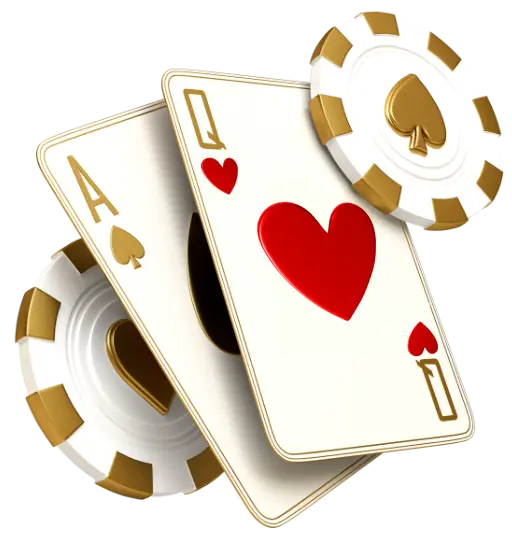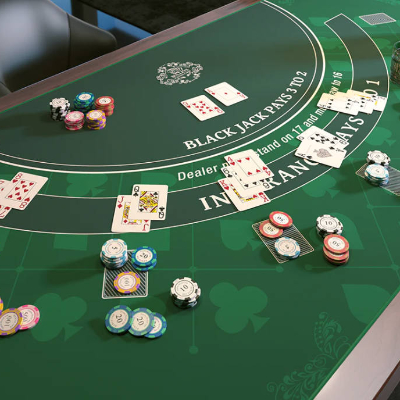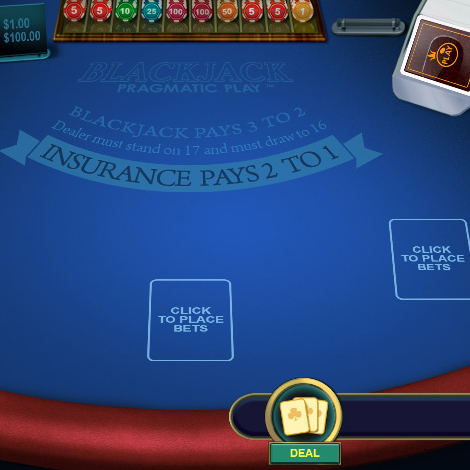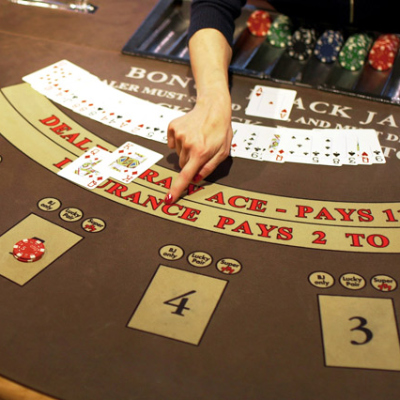Although luck is certainly involved, Blackjack is a skill based game that is known to have the lowest house edge. What that means is that practice and having a strategy can improve your odds.
Blackjack strategies are about what decisions you should make in particular situations. We are not talking about betting systems planning your stakes, but rather whether you should split, double down, or what not, depending on what cards you have in your hand.
In this Blackjack strategy guide, we'll cover the most important methods to help you master the game and improve your chances of winning.
Table of Contents
- Blackjack Basic Strategy: Which Move Should I Make?
- Basic Strategy and Blackjack Variants
- Blackjack Games that Work With Basic Strategy
- Side Bets and Insurance in Blackjack Strategy
- Blackjack Card Counting - Thorp's Strategy
- Hi Lo Count
- Alternative Blackjack Counting Systems
- Card counting in Online Blackjack
- Blackjack Strategies and Money Management
- Blackjack Strategies FAQ
Blackjack Basic Strategy: Which Move Should I Make?
Basic blackjack strategy helps you decide what to do based on the cards in your hand and the dealer's open card. Most of it is simple mathematics based on the likelihood of you or the dealer going bust versus scoring 21.
While simple, it is a very robust strategy that covers all the card combinations you can see with recommended actions from each. And this means:
- When to Hit or Stand - to draw another card or not
- When to Split - to divide your two cards into separate hands
- When to Double Down - to double the size of your initial bet
When to Hit or Stand
We start with the most basic decision in Blackjack. When to hit or stand, or in plain English, when to draw another card or not. The decision is based on the likelihood of you going bust – that is going above 21 points, on drawing a third card.
In general, the chances of going bust increase significantly with a hand of 17 or higher. Unless it's a soft 17 – that is a hand that includes an Ace, so it can be 17 or 7. The table below shows the probability of going bust if you decide to hit based on your current hand.
| Player's Points | Player's Probability of Going Bust | Dealer's Up Card | Dealer's Probability of Going Bust |
|---|---|---|---|
| 21 | 100 % | Ace | 12 % |
| 20 | 92 % | 10 (or face card) | 21 % |
| 19 | 92 % | 9 | 23 % |
| 18 | 92 % | 8 | 24 % |
| 17 | 69 % | 7 | 26 % |
| 16 | 62 % | 6 | 42 % |
| 15 | 58 % | 5 | 43 % |
| 14 | 56 % | 4 | 40 % |
| 13 | 39 % | 3 | 38 % |
| 12 | 31 % | 2 | 35 % |
| 11 | 0 % |
As you see, when your hand has 11 points, it's impossible to go bust, so you should always hit on a 11. And the dealer is most likely to bust when their card is a 5 or 6, which makes it the best starting scenario from the player's perspective.


There are some Blackjack variants that Push on 22 instead of going bust; in these cases, do not use the basic strategy here as is, since the specific combinations and decisions in these tables are based on 21.
When to Split
Splitting is when you take the two cards you were dealt and separate them into two separate hands. This can be a useful option to increase your chances of winning.
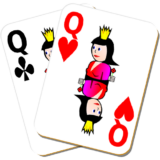

On the other hand, if you have two 9 cards, it adds up to 18. It's not so close to 21, but the chances of going bust are not negligible either. By splitting the 9s, you decrease the likelihood of going bust.
However, some of this also depends on what the dealer's hand might be, since you are playing against the dealer. The table below summarizes when you should split in Blackjack.
| Dealer's Up Card | |||||||||||
|---|---|---|---|---|---|---|---|---|---|---|---|
| Player's Hand | 2 | 3 | 4 | 5 | 6 | 7 | 8 | 9 | 10 | Ace | |
| 2 | SpD | SpD | Sp | Sp | Sp | Sp | H | H | H | H | |
| 3 | SpD | SpD | Sp | Sp | Sp | Sp | H | H | H | H | |
| 4 | H | H | H | SpD | SpD | H | H | H | H | H | |
| 5 | SpD | Sp | Sp | Sp | Sp | H | H | H | H | H | |
| 6 | Sp | Sp | Sp | Sp | Sp | H | H | H | H | H | |
| 7 | Sp | Sp | Sp | Sp | Sp | Sp | H | H | H | H | |
| 8 | Sp | Sp | Sp | Sp | Sp | Sp | Sp | Sp | Sp | Sp | |
| 9 | Sp | Sp | Sp | Sp | Sp | S | Sp | Sp | S | S | |
| Ace | Sp | Sp | Sp | Sp | Sp | Sp | Sp | Sp | Sp | Sp | |
Legend: H = Hit, S = Stand, Sp = Split, SpD = only split if double down is allowed / Note: 10 includes face cards
On the other hand, there are some pairs that should always be split. For example, like two 8 cards, since a hand of 16 points is so unlikely to win that it's worth taking the risk, even when the dealer has a good up card.
When to Double Down
Double down refers to doubling your bet size while drawing one more card. Even though it sounds like a risky move for advanced players at first, it is part of basic blackjack strategy because the decision is based on looking at probabilities in the dealer's hand against the probabilities in your hand. Which means that even though you are not 100% sure, you do have a pretty good idea of the likelihood on you beating the dealer.
Below is a table showing when you should double down. Note that because Doubling down will give you an extra card. Therefore you do not want to double down when your hand is 20, even though you are likely to beat the dealer. Doubling down in this situation will give you a third card, and there is a high probability that you would go bust.
| Dealer's Up Card | |||||||||||
|---|---|---|---|---|---|---|---|---|---|---|---|
| Player's Hand | 2 | 3 | 4 | 5 | 6 | 7 | 8 | 9 | 10 | Ace | |
| 8 | - | - | - | DD | DD | - | - | - | - | - | |
| 9 | DD | DD | DD | DD | DD | - | - | - | - | - | |
| 10 | DD | DD | DD | DD | DD | DD | DD | DD | - | - | |
| 11 | DD | DD | DD | DD | DD | DD | DD | DD | DD | DD | |
| Ace + 2 | - | - | - | DD | DD | - | - | - | - | - | |
| Ace + 3 | - | - | - | DD | DD | - | - | - | - | - | |
| Ace + 4 | - | - | - | DD | DD | - | - | - | - | - | |
| Ace + 5 | - | - | DD | DD | DD | - | - | - | - | - | |
| Ace + 6 | - | DD | DD | DD | DD | - | - | - | - | - | |
| Ace + 7 | - | DD | DD | DD | DD | - | - | - | - | - | |
| Ace + 8 | - | - | - | - | - | - | - | - | - | - | |
| Ace + 9 | - | - | - | - | - | - | - | - | - | - | |
Note: DD = Double Down / 10 includes face cards
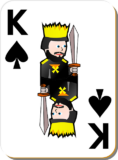

Although you don't have to, using double down at the right time can increase your overall edge significantly in the longer run.
Basic Strategy and Blackjack Variants
The basic strategy presented here is based on Classic Blackjack. Many of the concepts will still apply in other games, but it is best to adapt your strategy according to the variant you are playing. That's because, for example, whether the dealer is forced to hit or stand on a 17 directly affects their chances of a 21 in comparison to your hand.
As a general rule, always check the rules for the variant you are playing. Some games might have specific rules and give you other opportunities to split or to double down, which directly affects what you should do with each hand. Consider the basic strategy as a very general cheat sheet only.
Blackjack Games that Work With Basic Strategy
While basic strategy can be adapted for all variants, it works best in variants with rules closest to Classic Blackjack, mainly because that is what it's based on and so will require fewer adjustments. And that means basic strategy works best with these variants:


- American Blackjack
- Atlantic City Blackjack
- Vegas Strip
What these games have in common is that they all allow splitting and double down. Furthermore, the dealer's first card is always face up. These elements are considered foundational in basic strategy.
Side Bets and Insurance in Blackjack Strategy
A lot of players like to buy side bets and insurance when playing Blackjack. However, this is not part of the game's strategy in the true sense. Let's start with insurance first.


As for side bets. By definition, side bets are not critical to the game itself, so they are not considered strategy. They can however be fun and you shouldn't underestimate the importance of having fun in the overall gambling experience.
Blackjack Card Counting – Thorp's Strategy
At this point, you probably understand that having at least a feeling of what cards are still in the deck will give you an advantage when playing Blackjack. This is why card counting is such a big deal in the game.
Edward Thorp, the mathematician, took things a step further and devised card counting systems to help gamblers keep track of what cards are in and out of the shoe. You don't actually count every card in these systems, but rather you develop mental tricks to keep track of things. The most famous is the Ten Count System.
How to Use 10 Count Card Counting
Before the cards are dealt, build a mental picture to divide all the cards into two groups:
- Ace to 9 = +4
- 10 and Face cards = -9
Whenever a card is dealt, and it doesn't matter to whom, add that value to your count. You want to make this a running count as every card is dealt so you don't waste time adding and subtracting when you should be making decisions.
And basically, the higher your count is in positive numbers, the greater the likelihood that you will see 10 cards coming next. This is good for players and therefore you can consider increasing your bet.
Hi Lo Count
Another popular card counting system is the Hi Lo system invented by the computer scientist Harvey Dubner. It's very similar to the 10 count in that you maintain a running count as the cards are dealt. The values assigned are however different:
- 2 to 6 = +1
- 7 to 9 = 0
- 10, Face and Ace = -1
Again, if your count is high in the positives, then the probability of getting a high value card like a 10 is high. Conversely, if your count is in the negatives, the likelihood of being dealt low value cards is high.
However, casinos often add more decks to the game to increase their edge, and this directly affects the validity of your running count. That's why you want to look for the True Count, which is your Running Count divided by Decks Remaining.
For example, if you have a Running Count of -8 and 2 decks remaining, then your True Count is -4.


Alternative Blackjack Counting Systems
Other blackjack counting systems have developed over the years. They all aim to provide players with a more accurate picture of what cards can come up next, with greater emphasis on the True Count matching the number of decks in the game.
Below is a summary of the most important Blackjack counting systems:
| Card Value | ||||||||||||
|---|---|---|---|---|---|---|---|---|---|---|---|---|
| Assigned value |   |   |   |   |   |   |   |   |   |   | ||
| Ace Five Count | ||||||||||||
* Black 7s valued at 0; Red 7s valued at 1
Below are all the Blackjack Card Counting Systems presented individually:
Hi Opt 2 Count
This divides the cards into 4 categories. 8, 9 and Aces are 0 points; 2, 3, 6 and 7 are 1 point; 4 and 5 are 2 points; 10 and Face cards are -2 points. Since this is quite complicated to keep track of in game, the Hi Opt 2 Count system is rarely used in practice.
KO Count
8 and 9 are worth 0 points; 2 to 7 worth 1 point; all other cards worth -1. When the Running count is +2 or more, stake size should be increased. When the count is 1 or less, the bet size should be reduced. KO Count also suggests insurance at +3 points.
Zen Count
Cards are divided into 5 groups. 8 and 9 are worth 0; 2, 3 and 7 are +1; 4, 5 and 6 are +2, Ace is -1, Face cards are -2. Takes some time to master because of the 5 groups, so not necessarily for beginners.
Omega II Count
2 ,3 and 7 are +1; 4, 5, 6 are +2; 9 is -1; 8 and Ace are 0; 10 and Face are -2. The Omega II is popular because of its accuracy.
Red Seven Count
As the name suggests, the red 7 cards have a special role. 2 to 6 are worth 1 point; 10, Face and Ace are -1. Red 7 is 1; Black 7 is 0.
Unlike most card counting systems, the card total in Red Seven comes to +2 instead of 0, which is why it is not suitable for new players.
Ace Five Count
All 5s are worth +1; Aces -1. All other cards have no value in this system. Once you reach +2, your bet can be doubled if you are playing Classic Blackjack. Other variants may require a higher count. Since the system is so simple, it is a popular choice for beginner players who want to learn card counting.
Wong Halves Count
2 and 7 are worth 0.5 points; 8 is 0; 9 is -0.5 points. 3, 4, and 6 are 1 point; 5 is 1.5 point; 10, Face and Ace are -1 point. Not the easiest to master, but can be a very efficient system when you get it.
Card counting in Online Blackjack
Before you spend too much effort mastering card counting, you should be aware that its efficiency is limited in online blackjack games. As you might have already noticed, the accuracy of card counting is highly dependent on the true count, that is the number of decks in play.
Online blackjack games typically employ an algorithm that is the digital equivalent of a continuous shuffle machine, which makes card counting impossible. However, card counting can still work in live dealer blackjack games. Look for tables where the dealer draws cards from a shoe.


Blackjack Strategies and Money Management
Strategies and card counting can give you a much better idea of what cards might be dealt next so you can make the right decisions to improve your odds over the house edge. However, these are all based on probabilities, which means there can be no guarantee. There is still an important element of luck in, and it is this random element that makes the game fair.
This is why it's good to have some sort of system to keep track of your money flow in your bankroll. Blackjack systems help you decide on the size of your bet depending on certain win loss events. Most importantly, you should know what your own personal loss limit is before going in. This will help you stay in control even in the worst case scenario.
Blackjack Strategies FAQ
- What is basic strategy?
- Is card counting illegal?
- Does card counting work at online casinos?
- Which blackjack strategy is best?
- How can I use Blackjack strategy when playing?
1. What is basic strategy?
Basic strategy in Blackjack refers to the decisions you should make given the cards in your hand versus what the dealer's open card is. For example, if you have two 10 cards, you should always stand because the chances of going bust with a hit are high, while simultaneously you have a good chance at beating the dealer since you are very close to 21. Basic strategy is based on simple but rigorous mathematics that give you probabilities on you going bust, versus the dealer going bust.
2. Is card counting illegal?
Card counting is not illegal. However, since casinos are private businesses, they have a right to ask any person on their grounds to leave for whatever reason. And that is what happens when the pit boss even suspects someone is card counting. However, this obviously doesn't apply at online casinos or if you're playing at home with friends.
3. Does card counting work at online casinos?
If you want to use card counting in online blackjack games, we suggest picking a game from the live casino section. Unlike software based games, you can see how and when card shuffling happens so you know how to maintain the true count that is critical to the success of most card counting systems.
4. Which blackjack strategy is best?
This depends somewhat on your own experience. We suggest that beginners start with basic strategy because once you understand the basics, it's easy to apply. Card counting on the other hand requires a high degree of concentration and may have limited application with different card shuffling measures.
5. How can I use Blackjack strategy when playing?
You can print out the strategy tables on this page, and use them as a cheat sheet when playing online games. We recommend RNG blackjack games that you can play for free online so you can have unlimited practice. While card counting doesn't work well with RNG games, basic strategy always works so it's good to master it.
